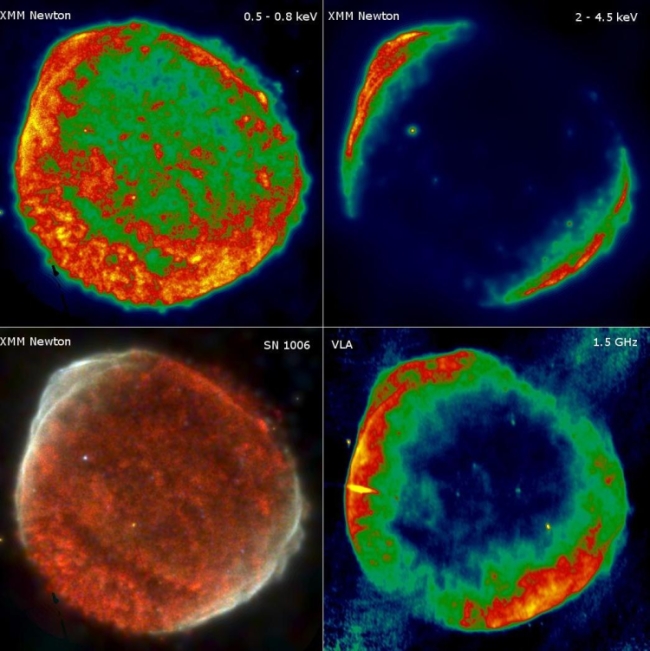
 Credit: Image courtesy of CEA/DSM DAPNIA/SAp, ESA & NRAO
Credit: Image courtesy of CEA/DSM DAPNIA/SAp, ESA & NRAO
Cosmic Ray Gun Revisited
Supernovae, those titanic explosions which mark the death of stars, do substantial damage to their host galaxies. Their explosive force powers high energy streams of subatomic particles called cosmic rays. X-ray images by the ASCA satellite of the remains of the supernova SN 1006 have revealed details of this process and now XMM-Newton has shown it in even
better detail. The image on the upper left shows low energy emission from the hot gas inside the nebula; on the upper right, higher energy emission shows the locations at the edge of the remnant where cosmic rays are produced; the image on the lower left is a composite X-ray image where red is low-energy emission, green medium and blue high energy emission. For comparison, at the lower right, emission from high energy electrons spiralling around magnetic fields at the outer part of the remnant is revealed by a radio image from the Very Large Array.
Last Week *
HEA Dictionary * Archive
* Search HEAPOW
* Education
Each week the HEASARC
brings you new, exciting and beautiful images from X-ray and Gamma ray
astronomy. Check back each week and be sure to check out the HEAPOW archive!
Page Author: Dr. Michael F. Corcoran
Last modified Monday, 26-Feb-2024 17:46:53 EST


